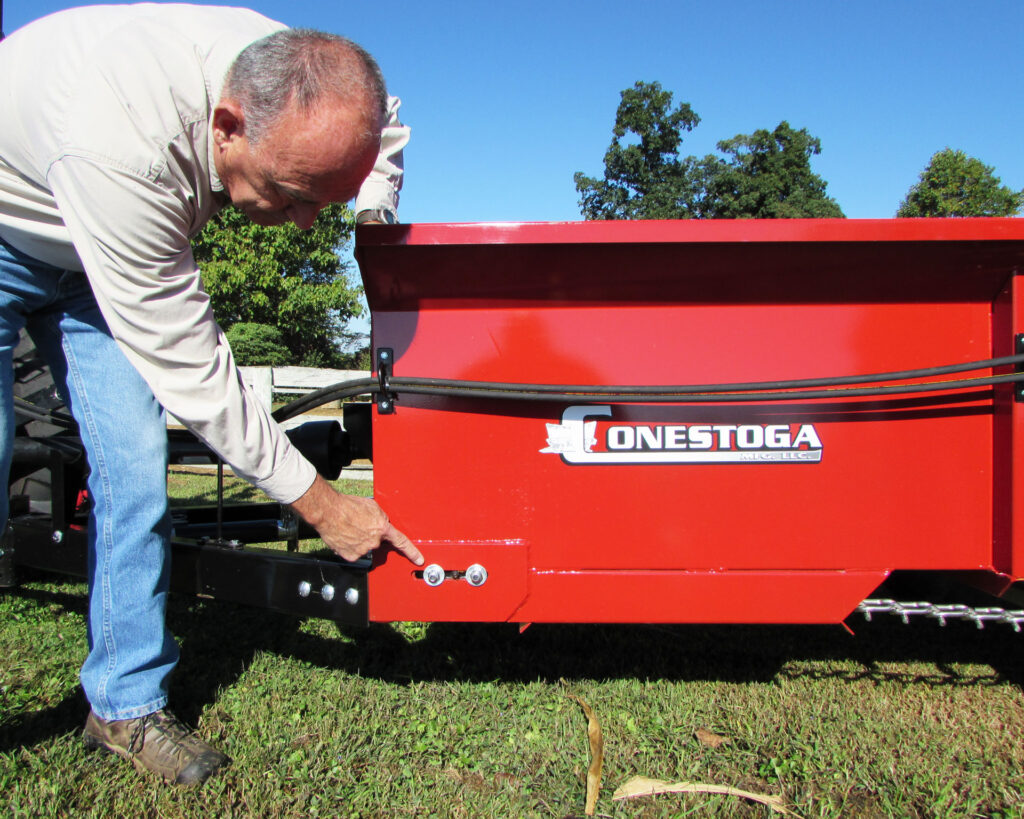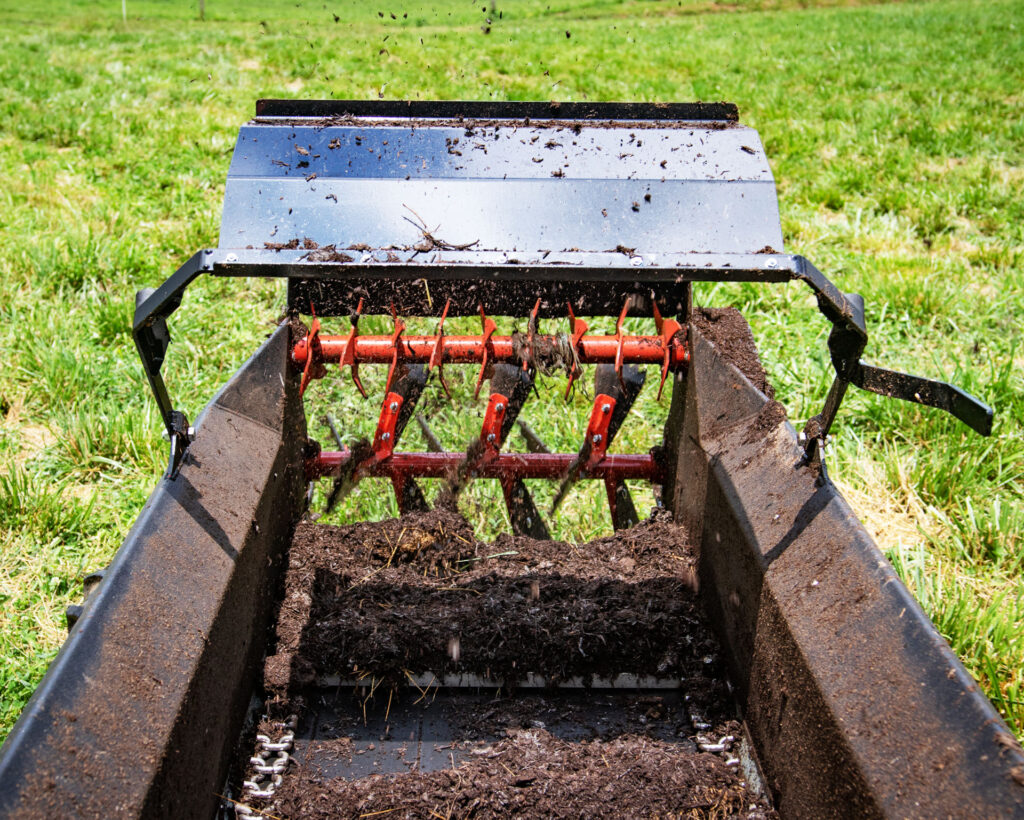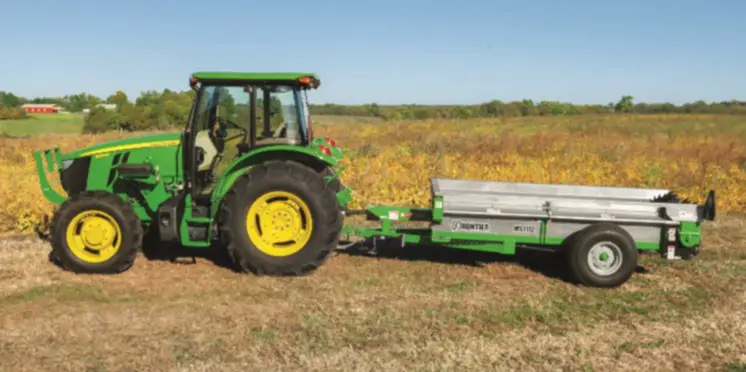This post may contain affiliate links which means I may receive a commission for purchases made through links. Learn more on my Private Policy page.
If you find yourself in the world of agriculture, then the use of a manure spreader is likely something you are familiar with. However, even seasoned farmers can benefit from understanding the best practices for utilizing this valuable piece of equipment. In this article, we will explore the essential tips and techniques that will help you make the most out of your manure spreader, ensuring efficient and effective distribution of this valuable organic fertilizer. Whether you are a beginner or an experienced farmer, these best practices will surely enhance your farming practices and yield impressive results.

Choosing the Right Manure Spreader
When it comes to choosing the right manure spreader, there are several factors to consider. The first thing you should determine is the type of manure spreader that will best suit your needs. There are different types available, including vertical beaters, horizontal beaters, and flail spreaders. Each type has its own advantages and disadvantages, so it’s important to understand which one will work best for your specific situation.
In addition to the type of manure spreader, you’ll also need to consider the size and capacity. The size of the spreader will depend on the amount of manure you need to spread and the size of your operation. It’s important to choose a spreader that has enough capacity to handle the volume of manure you’ll be spreading, but not so large that it becomes difficult to maneuver or maintain.
Another crucial factor to consider is compatibility with your existing equipment. Make sure that the manure spreader you choose is compatible with your tractors or other machinery. This will ensure that you can easily hitch and unhitch the equipment and that it operates smoothly and efficiently.
Lastly, it’s important to consider environmental factors when choosing a manure spreader. Look for features that can minimize odor and ammonia emissions, as well as protect sensitive areas like water sources. Additionally, make sure to comply with local regulations regarding manure spreading.
Preparation Before Using the Manure Spreader
Before you start using the manure spreader, there are some important preparations to make. Safety should always be a top priority, so make sure to take the necessary precautions before operating the equipment. This includes wearing appropriate personal protective equipment, such as gloves and eye protection.
It’s also important to thoroughly inspect the manure spreader before each use. Check for any signs of wear or damage, and make any necessary repairs or adjustments. Pay special attention to the spreading mechanism and ensure that it is in good working order.
Next, you’ll need to prepare the manure for spreading. This may involve removing any large debris or foreign objects from the manure. It’s also a good idea to break up clumps or chunks that may have formed to ensure a more even spread.
In addition to preparing the manure, you’ll also need to prepare the field where you’ll be spreading. This may involve removing any obstacles or debris from the field and ensuring that the soil is relatively dry and ready to receive the manure.
Loading the Manure Spreader
Once you’ve completed the necessary preparations, it’s time to load the manure spreader. Proper loading techniques are essential to ensure that the spreader operates efficiently and effectively.
When loading the spreader, make sure to distribute the manure evenly throughout the bin. This will help to ensure a more consistent spread pattern and prevent overloading or uneven distribution. It’s also important to avoid overloading the spreader, as this can lead to mechanical issues or poor spreading results.
To achieve a uniform distribution of manure, it’s important to pay attention to the speed at which you’re spreading. Maintaining a consistent speed will help to control the application rate and prevent clumping or uneven spreading patterns. It may be helpful to make adjustments to the spreader’s settings or controls to achieve the desired spread pattern.
To level the load in the spreader, periodically check and adjust the distribution in the bin. This can be done by gently shifting the manure or using a rake or shovel to spread it more evenly. By leveling the load, you’ll ensure a more consistent spread and avoid areas with excessive or insufficient manure coverage.
Operating the Manure Spreader
Operating the manure spreader requires some skill and attention to detail. Properly adjusting the spread pattern is crucial to achieve an even distribution of manure.
Start by adjusting the spreader’s settings to control the spread pattern. This may involve adjusting the speed, flow, or spread width depending on the specific spreader model. Experiment with different settings to find the right combination for your field and manure type.
Maintaining a consistent speed is also important when operating the spreader. This will help to ensure a consistent application rate and prevent excessive or insufficient spreading. Pay attention to the condition of the field and adjust the speed accordingly to achieve optimal results.
When choosing the right application rate, consider the nutrient content of the manure and the needs of your crops. It’s important to strike a balance between providing enough nutrients for your plants and avoiding over-application, which can lead to nutrient runoff and environmental pollution.
Avoid spreading manure on unsuitable areas, such as steep slopes, water bodies, or areas with sensitive vegetation. This can help to minimize environmental impact and protect water quality. If there are specific regulations or guidelines in your area regarding manure spreading, make sure to comply with them to ensure responsible and sustainable practices.

This image is property of www.vtillc.com.
Safety and Maintenance
Safety should always be a priority when operating a manure spreader. During operation, it’s important to follow all safety measures recommended by the manufacturer. This may include wearing appropriate protective gear, keeping bystanders at a safe distance, and using caution when moving or hitching the equipment.
Regular cleaning of the manure spreader is necessary to prevent buildup and ensure proper operation. Remove any residual manure from the spreader and clean all components thoroughly. Pay attention to hard-to-reach areas, such as corners and crevices, where debris can accumulate.
In addition to cleaning, it’s important to regularly inspect and maintain the components of the manure spreader. Check for any signs of wear or damage, such as loose or worn parts, and make any necessary repairs or replacements. Regular maintenance will help to prolong the lifespan of the equipment and ensure optimal performance.
When not in use, store the manure spreader in a dry and sheltered area. This will help to prevent rusting and damage caused by exposure to the elements. If possible, store the spreader in a location where it can be easily accessed for maintenance and repairs.
Environmental Considerations
Manure spreading can have a significant impact on the environment if not carried out responsibly. To minimize negative environmental effects, consider the following factors.
Avoiding water contamination is crucial when spreading manure. Make sure to keep a distance from water bodies such as streams, rivers, and ponds to prevent nutrient runoff and potential contamination. Also, avoid spreading manure on saturated or frozen ground, as it can increase the risk of runoff.
Minimizing odor and ammonia emissions is also important for the well-being of both the environment and neighboring communities. Look for manure spreaders that are designed to reduce odor emissions, such as those with sealed or covered bins. Additionally, consider incorporating techniques such as injection or immediate incorporation of manure into the soil to further reduce odors.
Protecting sensitive areas is essential to preserve natural habitats and prevent negative ecological impacts. Be mindful of areas with sensitive vegetation, wildlife habitats, or protected ecosystems. Avoid spreading manure in these areas or consider using alternative fertilizer application methods.
Complying with local regulations is crucial to ensure that manure spreading practices are in line with environmental guidelines and policies. Familiarize yourself with any regulations or restrictions that may be in place in your area and make sure to follow them accordingly.

This image is property of i.ytimg.com.
Efficient Manure Application Techniques
To make the most of your manure spreading efforts, consider implementing these efficient application techniques.
Timing of application is key to maximize the nutrient value of the manure and minimize potential losses. Apply the manure when the crop’s nutrient demand is high and the soil conditions are suitable for nutrient uptake. Avoid spreading during periods of heavy rain or when the soil is saturated, as this can lead to nutrient runoff.
Consider using cover crops in conjunction with manure application. Cover crops can help to reduce nutrient runoff, control erosion, and improve soil health. Planting cover crops after manure application can help to capture excess nutrients and prevent them from leaching into water bodies.
Incorporating manure into the soil as soon as possible after spreading can help to reduce odors and nutrient losses. Use implements such as tillage equipment or injection systems to mix the manure into the soil. This will help to improve nutrient availability for the plants and minimize the risk of runoff.
To prevent nutrient buildup and potential nutrient imbalances, rotate the areas where manure is applied. By rotating application areas, you can distribute the nutrients more evenly across your fields and prevent nutrient saturation in certain areas.
Managing Nutrient Content
To ensure efficient use of manure as a fertilizer, it’s important to manage the nutrient content effectively.
Sampling and testing manure is essential to determine its nutrient content and make informed decisions regarding application rates. Regularly collect samples of the manure and send them to a laboratory for analysis. This will help you to adjust the application rates based on the nutrient content and avoid over- or under-application.
Balancing nutrient application is crucial to avoid nutrient imbalances and maximize crop productivity. Consider the nutrient needs of your specific crops and adjust the application rates accordingly. This may involve supplementing the manure with additional nutrients or adjusting the timing and rates of application.
Recording application rates is important for keeping track of your manure spreading practices and ensuring compliance with local regulations. Maintain detailed records of the dates, amounts, and locations of manure applications. This information can be useful for future reference and to demonstrate responsible and sustainable practices.

This image is property of conestogamanurespreaders.com.
Troubleshooting Common Issues
When using a manure spreader, it’s important to be aware of and address common issues that may arise.
Clogging of the spreading mechanism can occur if the manure is too wet or contains large clumps. To prevent clogging, make sure the manure has a consistent texture and avoid spreading when it is too wet. Regularly clean and inspect the spreading mechanism to remove any buildup or blockages.
Uneven spreading patterns can be caused by improper adjustment of the spreader settings, uneven loading, or mechanical issues. Make sure to properly adjust the spreader settings based on the field conditions and type of manure. Also, ensure that the load is evenly distributed throughout the spreader to achieve a uniform spread pattern. Regularly inspect and maintain the spreading mechanism to address any mechanical issues that may be contributing to uneven spreading.
Spreader calibration problems can lead to inaccurate spreading, resulting in either over- or under-application of manure. Regularly calibrate your spreader to ensure accurate application rates. This can be done by measuring the amount of manure spread over a specific distance and adjusting the spreader settings accordingly.
If you encounter any malfunctioning parts or components on the manure spreader, it’s important to address them promptly. Inspect the spreader regularly for signs of wear or damage and make any necessary repairs or replacements. Consult the manufacturer’s guidelines or seek professional assistance if needed.
Training and Education
Proper training and education are essential for safe and efficient operation of a manure spreader.
Operators should receive thorough training on how to operate the specific model of manure spreader they will be using. This training should cover topics such as safety precautions, proper loading and spreading techniques, and troubleshooting common issues. Make sure to follow the manufacturer’s guidelines and recommendations when providing training to operators.
In addition to operator training, it’s important to educate staff and workers about the importance of responsible and sustainable manure spreading practices. This can help to create a culture of environmental stewardship and ensure that everyone understands their role in minimizing the impact of manure spreading on the environment.
Keeping updated with industry standards and best practices is crucial to stay informed about the latest advancements and recommendations in manure spreading. Attend workshops, seminars, and conferences related to manure management and spreading to gain valuable insights and knowledge. Subscribe to industry publications or online resources to stay informed about the latest trends and developments in the field.
By following these best practices and guidelines, you can ensure safe, efficient, and environmentally responsible use of a manure spreader. Taking the time to choose the right spreader, properly prepare for its use, and operate it effectively will help you make the most of this valuable agricultural tool while minimizing negative impacts on the environment and surrounding communities.

This image is property of conestogamanurespreaders.com.
This post may contain affiliate links which means I may receive a commission for purchases made through links. Learn more on my Private Policy page.

